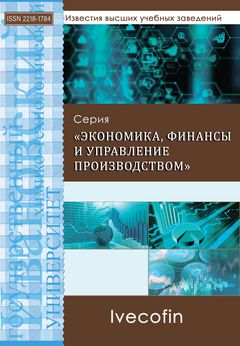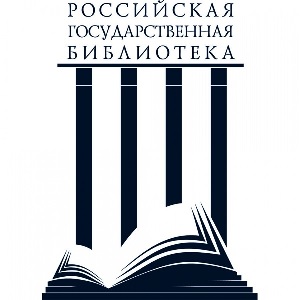РАЗРАБОТКА ПОДХОДА К КЛАСТЕРИЗАЦИИ РАЙОНОВ НА БАЗЕ ИНСТРУМЕНТАЛЬНОГО СРЕДСТВА МАШИННОГО ОБУЧЕНИЯ KNIME
Аннотация
Научная работа посвящена применению методов кластеризации для группировки однородных районов в рамках более крупных территориальных образований с целью организации обоснованного государственного финансирования развития территорий. В настоящее время для объединения районов в группы используется ряд статистических показателей, которые не всегда отражают реальную ситуацию и не позволяют обоснованно сгруппировать разнородные районы внутри одной области. Кластеризация для целей группировки может стать инструментом бюджетной политики, позволяющей обоснованно распределить средства, основываясь не только на социальных и демографических показателях, но и опираясь на ряд дополнительных факторов. Районы, имеющие схожие показатели социально-экономического развития, могут иметь разный потенциал и нуждаться в разных стратегиях финансирования. Для принятия обоснованных долгосрочных решений применение метода кластеризации должно основываться на ряде статистических показателей за длительные сроки. В работе приведен подход к кластеризации районов на примере Ивановской области. Областной центр выделен в отдельный кластер, что обосновано существенными отличиями от других населённых пунктов по всем показателям. Кластеризация представляет собой метод машинного обучения без учителя, то есть данные будут группироваться без указания аналитиком критериев разделения
Литература
National Program «Digital Economy of the Russian Federation», approved by the Presidium of the Presidential Council for Strategic Development and National Projects, Protocol of 04.06.2019 N7. (in Russian).
Valinurova A.A. Theoretical substantiation of the use of clustering method in bank reservation. Ivecofin. 2021. N2(48). P. 17-22. (in Russian).
Valinurova A.A., Danilova S.V. A new approach to the formation of reserves in a commercial bank. Bulletin of the Ivanovo State University. Series: Economics. 2020. N4(46). P. 93-97. (in Russian).
Valinurova A.A., Smirnova E.M., Valinurov T.R., Bal-yasova E.D. Transformation of approaches to assessing the effectiveness of a bank branch in the digital economy. Bulletin of the Ivanovo State University. Series: Economics. 2020. N2(44). P. 90-97. (in Russian).
Valinurova A.A., Smirnova E.M., Ksenofontova O.L. Intelligent remote banking and its features. Modern high-tech technologies. Regional application. 2021. N2(66). P. 16-21. (in Russian).
Danilova S.V. Actual problems of business analytics and data mining in the digital economy. Materials of the scientific and practical Festival «Research activity in the classical University: traditions and innovations». 2020. P. 386-388. (in Russian).
Dubova S.E. Analysis of the potential for the spread of the phenomenon of digital money of central banks by credit organizations and institutions of the non-financial sector of the economy. Ivecofin. 2021. N3(49). P. 59-68. (in Russian).
Dugushkina N.V. Review of popular clustering methods in machine learning. Scienceasphere. 2020. N7. P. 112-118. (in Russian).
Kamaev V. A., Shcherbakov M. V., Al-Kataberi A.S. Analysis of socio-economic development of municipalities on the example of the Volgograd region using data mining models. Bulletin VSTU. Series «Actual problems of management, computer technology and informatics in technical systems". 2010. Vol. 6. N8. P. 103-106. (in Russian).
Krevsky M.I., Smetanev D.M. Application of machine learning and process mining to the tasks of clustering processes in the financial sector. Modern tools, methods and technologies of knowledge management. 2020. N3. P. 52-60. (in Russian).
Kuznetsov D.Yu., Troshina T.L. Cluster analysis and its application. Yaroslavl Pedagogical Bulletin. 2006. N4(49). P. 103-107. https://cyberleninka.ru/article/n/klasternyy-analiz-i-ego-primenenie/viewer. (in Russian).
Merzlikina G.S., Kuzmina E.V. Methodology for assessing the effectiveness of cluster activities based on a balanced scorecard in the digital economy. Ivecofin. 2020. N2(44). P. 14-23. (in Russian).
The Ministry of Digital Development, Communications and Mass Communications of Russia will coordinate the development of new production and communication technologies. https://digital.gov.ru/ru/events/41196 (in Russian).
Mirkin B.G. Cluster analysis methods for decision support. Moscow: HSE. 2011. 88 p. (in Russian).
The official website of the KNIME platform. https://www.knime.org. (in Russian).
Tyurin A.G., Zuev I.O. Cluster analysis, clustering methods and algorithms. Bulletin of MSTU MIREA. 2014. N2(3). P. 86-97. (in Russian).
Usman M. Hierarchical clustering using Python and Scikit-learn. https://pythobyte.com/hierarchical-clustering-with-python-and-scikit-learn-768953fe. (in Russian).
Khomyakova A.A., Mizgirev L.S., Shergin V.V. The use of data mining methods in the processes of managing the investment attractiveness of the region. Ivecofin. 2020. N2(44). P. 14-23. (in Russian).
Gorban А., Kegl B., Wunsch D., Zinovyev A. Principal Manifolds for Data Visualization and Dimension Reduction. Berlin – Heidelberg – New York. 2007.
Kanungo T. An efficient k-means clustering algorithm: Analysis and implementation. Pattern Analysis and Machine Intelligence. 2002. Vol. 24. N 7. P. 881–892.












